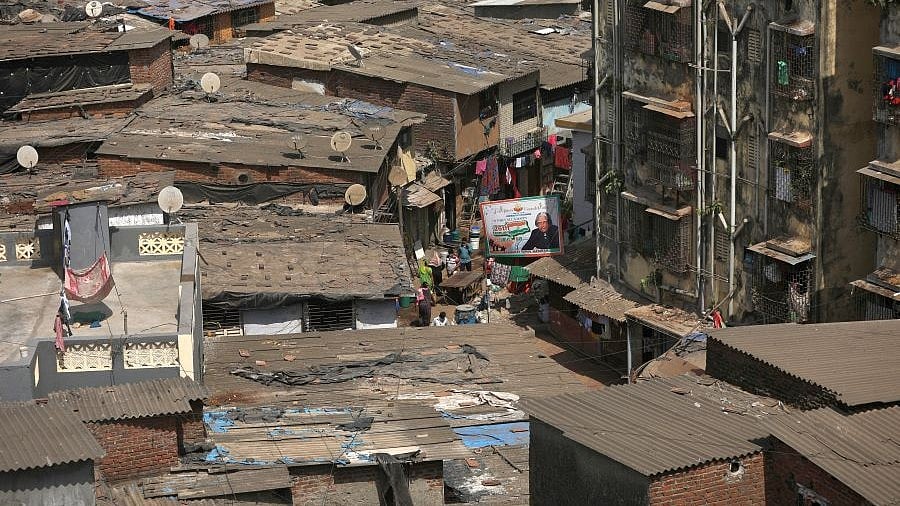
File photo of Dharavi.
Credit: Reuters File Photo
Mumbai: The project to transform Dharavi received a major boost as the Maharashtra government approved the master plan which will give a facelift to Asia’s biggest slum on Wednesday.
The socio-cultural identity of Dharavi in Mumbai would be maintained throughout the redevelopment process.
The Navbharat Mega Developers Private Ltd (NMDPL) is executing the mega-project as a special purpose vehicle (SPV) between the Government of Maharashtra — through the Dharavi Redevelopment Project (DRP), Slum Rehabilitation Authority (SRA) and the Adani Group.
The master plan was cleared at a meeting presided over by Maharashtra Chief Minister Devendra Fadnavis. “Dharavi’s redevelopment will ensure that it does not lose its soul,” Fadnavis said.
Deputy Chief Minister Eknath Shinde, who is the state’s Urban Development Department Minister and the Guardian Minister of Mumbai City district, was also present along with DRP CEO SVR Srinivas.
Fadnavis said that the government has issued important directions to all concerned departments with a strong emphasis on sensitive, inclusive, and eco-friendly redevelopment that preserves the unique identity of Dharavi.
“Dharavi is not just a locality. It represents a powerful micro-economy built on skilled labour, artisans, micro-enterprises, and underprivileged communities. It is essential that redevelopment efforts retain this spirit while unlocking new opportunities for the future,” he said.
“We have issued clear directives to ensure the voices and aspirations of all citizens are integrated into the plan, maintain the socio-cultural identity of Dharavi throughout the redevelopment, and enable a harmonious balance between progress and preservation,” said the CM, who is overseeing the progress of the project.
According to Fadnavis, this historic project, while protecting the essence of Dharavi, is expected to accelerate with renewed momentum, unlocking new possibilities for the community and the city at large.
“Dharavi is a transformative economic zone capable of reshaping the nation's urban and economic landscape. The redevelopment must include every Dharavikar. No one should be left behind. Rehabilitation of local businesses must be done respectfully at their original locations, maintaining their traditional character. Trust-building, coordination, and empathy are essential components of the redevelopment process,” he said.